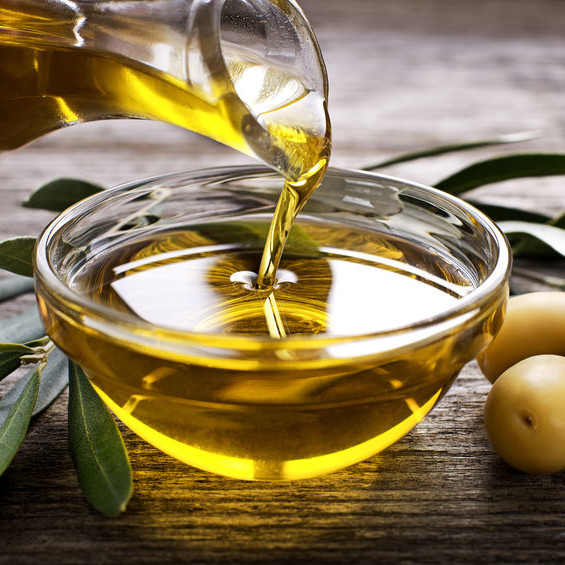
Olive Oil
What is Olive oil?
Olive oil is a fat extracted from the fruit of the olive tree (Olea europaea), a Mediterranean culinary staple. As an integral part of Mediterranean cooking, olive oil holds a unique place within the culinary world.
With a history stretching nearly 10,000 years, culinary influenced applications of olive oil range from simple vinaigrettes and infused oils to gourmet ice cream as served in some of the best restaurants in the world.
Origin
For ancient Greeks, the olive tree was a symbol of success and peace, and the extracted oil was anointed on important members of the society. It was believed that prosperity and wealth depended on this ritual, and not only olive oil, but the olives themselves, constituted an indispensable food in ancient Greeks’ diet.2
The true origin of the olive is not known but is speculated to be Syria or possibly sub-Saharan Africa. For more than 6000 years, the cultivated olive has developed alongside Mediterranean civilizations and is now commercially produced on more than 23 million acres (9.4 million ha) in the Mediterranean basin.3
Definition
Olive oil is defined by its grade. According to the USDA, the most premium form of olive oil is Extra Virgin Olive Oil, which has excellent flavor and odor (median of defects equal to zero and median of fruitiness greater than zero) and a free fatty acid content, expressed as oleic acid, of not more than 0.8 grams per 100 grams.1
- Virgin olive oil as reasonably good flavor and odor (median of defects between zero and 2.5 and median of fruitiness greater than zero) and a free fatty acid content, expressed as oleic acid, of not more than 2.0 grams per 100 grams.1
- Olive oil is the oil consisting of a blend of refined olive oil and virgin olive oils fit for consumption without further processing. It has a free fatty acid content, expressed as oleic acid, of not more than 1.0 gram per 100 grams, has acceptable odor and flavor characteristic of “virgin olive oil.”1
- Refined olive oil is the olive oil obtained from virgin olive oils by refining methods that do not lead to alterations in the initial glyceridic structure (basic glycerin-fatty acid structure). It has a free fatty acid content, expressed as oleic acid, of not more than 0.3 grams per 100 grams.1
Comercial production
In order to produce the best quality olive oil, olives are harvested from the tree without breaking the fruit then processed within 12 to 24 hours of the harvest. During this time, the fruit is generally graded and separated according to quality, while leaves, sticks and debris are removed. Prior to milling, the fruit is crushed to release the oil. The traditional method for milling olives is a stone mill, consisting of a base and upright millstone. The mill is slowly turned in order to minimize heat, a physical property of the milling process which can adversely affect the taste and flavor of the final oil. From here, the oil is treated to each particular grade as defined above.
Physical Properties
Olive oils contain fatty acids such as palmitic, palmitoleic, stearic, oleic, linoleic, linolenic and arachidic acid. Oleic acid is present in the highest concentration, the values were ranged between 64.8% and 72.8%. It is followed by palmitic acid (11.34%-17.33%), linoleic acid (6.08% – 11.68%), stearic acid (1.04%-2.06%), palmitoleic acid (1-1.64%), linolenic acid (0.16-0.96%) and arachidic acid (0.28%-0.92%).4
Nutrition
Olive oil consumption, specifically the extra-virgin variety, is associated with reduced risks of cardiovascular disease and mortality in individuals at high cardiovascular risk.5 With this said, excess consumption of olive oil, as with any form of oil, can be deleterious to the human frame when consumed in large quantities.
FDA Regulation
Olive oil is GRAS. FDA regulations in regards to olive oil generally involve the grade of the specific sample, as outline above.
References
- USDA Olive Oil Grades. http://www.ams.usda.gov/AMSv1.0/getfile?dDocName=STELDEV3011889
- Martin-Moreno J. “The Role of Olive Oil in Lowering Cancer Risk.” Journal of Epidemiol Community Health. 2000;54:726-727
- Vossen, P. “Olive Oil: History, Production, and Characteristics of the World’s Classic Oils.” Journal of Horticultural Science. August 2007. Vol.42(5).
- Abdalla, IH Khaddor, M Boussab A, Garrouj D, Souhial B. “Physical and Chemical Characteristics of Olive Oils from Cooperatives for Olive Growers in the Norht of America.” International Journal of Basic and Applied Sciences. Vol:14 No.02.
- Guasch-Ferre M, et al. “Olive Oil Intake and Risk of Cardiovascular Disease and Mortality in the PREDIMED Study.” BMC Medicine. 2014; 12:78.

